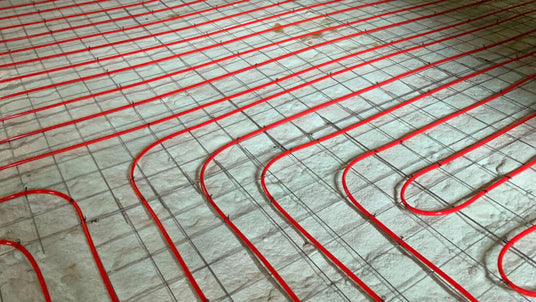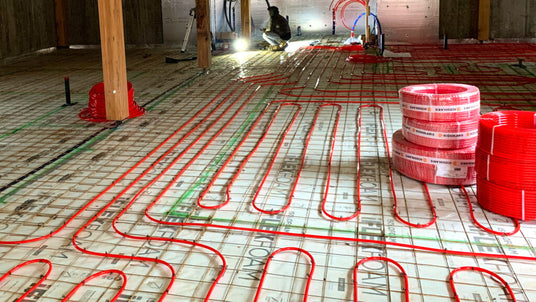PLACEMENT OF A RADIANT FLOOR SYSTEM
What is a remote manifold? When should it be utilized?

A remote manifold is an independent manifold installed within a building, separate from the main panel. Its utilization offers significant advantages in specific scenarios, including:
- Multiple Floors with PEX piping: When a building comprises multiple floors that require an individual radiant heating system, a remote manifold becomes a crucial component. It enables efficient control and regulation of heating circuits on each floor, ensuring optimal temperature management throughout the entire building.
- Increased Circuit Requirements: In cases where a single floor necessitates more than 13 heating circuits, a remote manifold becomes indispensable. By accommodating additional circuits beyond the capacity of a standard manifold, the remote manifold facilitates the effective distribution of heated water to meet the floor's specific heating demands.
- Complex Water Distribution: When tubing needs to be routed through multiple rooms or areas, a centralized manifold may not provide the most practical solution. In such instances, a strategically placed remote manifold is installed to serve as a centralized point, enhancing the water distribution system's efficiency. This setup minimizes the length of PEX piping required and optimizes water flow throughout the radiant heating system.
When installing a remote manifold, it directly receives heated water from the main panel. To facilitate the water flow, ¾’’ or 1’’ tubes are employed to direct the water from the boiler. These tubes act as essential conduits, metaphorical highways for the inbound and outbound water of the remote manifold(s). Depending on the installation requirements, the PEX piping can either be embedded in concrete or run through the floor joists, ensuring a reliable and efficient transfer of heat within the system.
In summary, a remote manifold offers flexibility, efficiency, and precise control in heating systems, particularly in buildings with multiple floors, high circuit demands, or complex water distribution needs. By incorporating a remote manifold, you can optimize heating performance, ensure uniform warmth across different areas, and achieve an effective heating solution within your building.
Where should I put the remote manifolds?

Remote manifold are typically concealed but must always be accessible for maintenance and adjustments. Common locations for remote manifold installations include closets, garages, or laundry rooms within the building. In multi-story structures, it is common to position the manifold upside down on the floor below.
Another approach involves embedding the manifold within a partition constructed with 2’’ x 6’’ uprights. Regardless of the chosen location or installation method, it is crucial to ensure that access to the remote manifold is facilitated.
This can be achieved by incorporating a hatch, a door, or a gate that allows convenient entry to the manifold area. The provision of accessible access points is essential for efficient servicing, repairs, and adjustments to the manfold and its associated components. By adhering to these guidelines, you can strike a balance between functionality and aesthetics, ensuring that the remote manifold remains discreetly concealed while remaining readily accessible when necessary.
